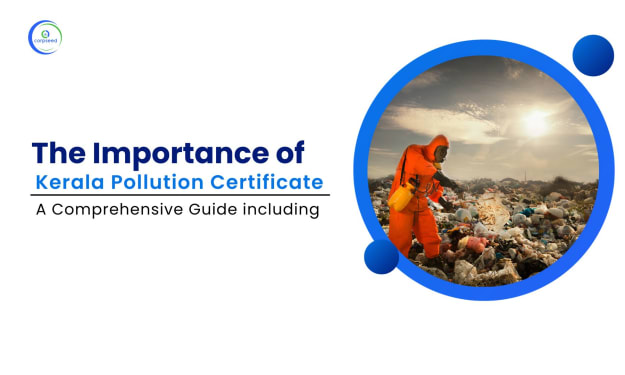Concept of Environmental impact assessment – Stages, Parameters, and Benefits
Environmental impact assessment

Introduction
An environmental impact assessment (EIA) is a process used to measure the potential environmental effects of a proposed project or development before it is authorized. EIAs are frequently necessary for large-scale projects such as the building of power plants, motorways, and mines, as well as for changes in land use like logging or urban development. The objective of EIA is to identify the measures to prevent, reduce and eliminate any adverse environmental effects and to identify and assess the potential environmental impacts of the proposed project. The process typically includes a series of steps such as screening, scoping, impact analysis, mitigation and enhancement measures, public consultation and disclosure, decision-making, and monitoring and follow-up. The outcome of an EIA is often a comprehensive report that outlines the potential effects of the project and the proposed mitigation measures.
What are the significant stages involved in an environmental impact assessment?
- Screening: Determine if the proposed project requires an EIA by assessing whether the project has the potential to cause significant environmental impacts.
- Scoping: Describe the major ecological consequences that the EIA will address, the particular impacts that must be researched, and the required level of detail.
- Impact analysis: Determine and assess the proposed project’s potential environmental effects. This typically includes collecting and analyzing data on the baseline conditions in the project area and assessing the direct and indirect impacts of the project on the physical, biological, and human environment.
- Mitigation and enhancement measures: Aim to avoid, reduce, or balance any adverse environmental consequences. This often includes considering mitigation strategies to minimize the project’s impacts and enhancing efforts to improve the area’s environmental standards.
- Public consultation and disclosure: Provide opportunities for public input and disclose the EIA findings. Usually, this entails holding public discussions and giving individuals an opportunity to study and offer suggestions on the EIA report.
- Decision-making: Use the information from the EIA to make decisions about whether to proceed with the project and under what conditions.
- Monitoring and follow-up: Implementing monitoring and reporting will assist in determining that the mitigation and enhancement methods are efficient. This typically includes implementing a monitoring program to track the environmental performance of the project over time, and reporting on the results to the relevant regulatory agency.
What are the major parameters of measuring environmental impact assessment?
There are several parameters that can be used to measure the environmental impact of a proposed project or development in an environmental impact assessment (EIA). Some of the major parameters include:
- Air quality: The impact of the project on air quality, including emissions of pollutants such as particulate matter, nitrogen oxides, and sulfur dioxide.
- Water quality: The impact of the project on water quality, including impacts on surface water, groundwater, and aquatic ecosystems.
- Soil quality: The impact of the project on soil quality, including impacts on soil structure, fertility, and contamination.
- Biodiversity: The impact of the project on biodiversity, including impacts on protected species and habitats.
- Land use: The impact of the project on land use, including impacts on agriculture, forestry, and other land uses.
- Noise: The impact of the project on noise levels, including impacts on nearby residents and wildlife.
- Climate change: The impact of the project on greenhouse gas emissions and the potential contribution to climate change.
- Human health: The impact of the project on human health, including impacts on air quality, water quality, and noise levels.
- Social and cultural: The impact of the project on social and cultural resources, including impacts on communities, traditional practices and values, and cultural heritage sites.
- Economic: The impact of the project on economic resources, including impacts on jobs, income, and local businesses.
It’s important to note that the specific parameters used to measure environmental impacts may vary depending on the nature of the project and the regulatory requirements of the jurisdiction.
Why we need Environmental Impact Assessment (EIA)?
Environmental Impact Assessment (EIA) is an important tool for evaluating the potential environmental impacts of a proposed project or development before it is approved. The importance of EIA can be summarized in the following points:
- Compliance with laws and regulations: EIA is often required by law as a means of assessing the environmental impact of a proposed project and ensuring that it complies with environmental regulations.
- Identifying and mitigating impacts: EIA allows for the identification and evaluation of potential environmental impacts of a project and the development of measures to mitigate or avoid these impacts.
- Public participation: EIA provides an opportunity for public participation and input, which can help to ensure that community concerns are taken into account in the decision-making process.
- Better decision-making: EIA can provide important information to decision-makers, allowing them to make informed decisions about whether to proceed with a project and under what conditions.
- Continuous improvement: EIA allows for the monitoring and follow-up of a project’s environmental performance over time, which can help to ensure that mitigation measures are effective and that any negative impacts are identified and addressed.
- Transparency: EIA reports are often made public, which helps to ensure transparency in the decision-making process and allows the public to understand the environmental impacts of a project.
- Sustainable development: By evaluating potential environmental impacts, EIA can help to promote sustainable development by ensuring that projects are designed and implemented in a way that minimizes negative impacts and maximizes positive contributions to sustainable development.
About the Creator
Jagriti Agarwal
I am working at Corpseed which is a Legal Compliance Advisory Platform that provides business planning, Legal compliance, and financial structure.





Comments
There are no comments for this story
Be the first to respond and start the conversation.